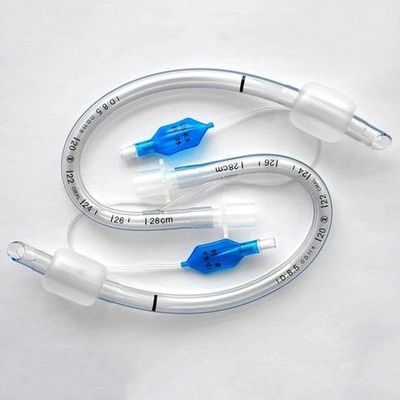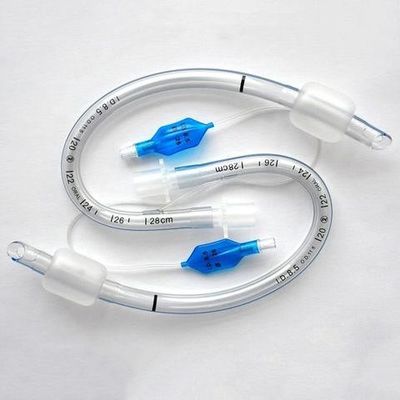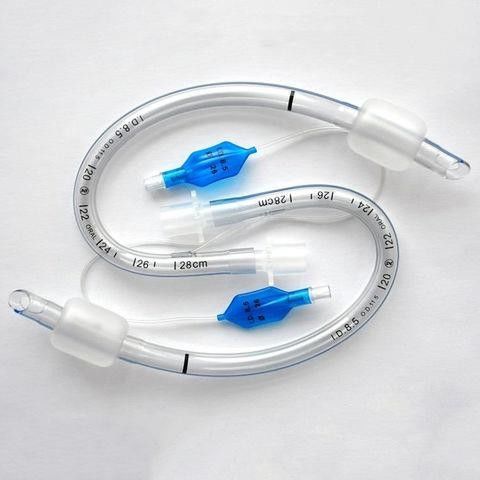
Flexible Anesthesia Catheter Oral Endotracheal Tube Airway With Low Pressure Cuff
-
Highlight
Flexible Anesthesia Catheter
,Oral Endotracheal Tube Airway
,Anesthesia Catheter Low Pressure Cuff
-
PropertiesInjection & Puncture Instrument
-
TypePreformed, Uncuffed
-
ColorTransparent
-
NameOral Endotracheal Tube
-
MaterialPVC
-
Size3.0-10.0mm
-
Nstrument ClassificationClass II
-
ApplicationMedical Care
-
OEM & ODMAvalaible
-
Place of OriginChina
-
Brand NameHenan Aile
-
CertificationCE
-
Model NumberEndotracheal Tube Oral Preformed
-
Minimum Order Quantity5000pcs
-
PriceNegotiable
-
Packaging Detailsindividually wrapped or customized
-
Delivery Time15-30days
-
Payment TermsL/C, T/T
-
Supply Ability1500000 Piece/Pieces per Month
Flexible Anesthesia Catheter Oral Endotracheal Tube Airway With Low Pressure Cuff
Disposable Flexible Preformed Oral Endotracheal Tube Airway With Low Pressure Cuff
1. Flexible Anesthesia Catheter:
- The catheter is designed for the delivery of anesthesia gases or medications during medical procedures. Its flexibility allows for ease of insertion into the patient's airway.
2. Oral Endotracheal Tube Airway:
- This refers to an endotracheal tube designed for insertion through the oral route, entering the trachea to secure the airway. Endotracheal tubes are crucial for maintaining a clear airway, facilitating mechanical ventilation, and administering anesthesia.
3. Low Pressure Cuff:
- The endotracheal tube is equipped with a low-pressure cuff. Cuffs are inflatable components around the tube that create a seal in the trachea. A low-pressure cuff exerts less pressure on the tracheal mucosa, reducing the risk of complications while maintaining an effective seal.
4. Application:
- The catheter is intended for use in anesthesia procedures where airway management is critical. The oral route of insertion makes it suitable for certain medical procedures where nasal intubation is not preferred.
5. Material:
- The tube is likely made of flexible and biocompatible materials suitable for medical use. Common materials include PVC (Polyvinyl Chloride) or other medical-grade polymers.
6. Size Range:
- The tube may come in various sizes to accommodate different patient populations. Proper sizing ensures optimal airway management and patient comfort.
7. Versatility:
- The flexibility of the catheter and the option for oral insertion contribute to its versatility, allowing healthcare providers to adapt to different patient needs and procedural requirements.
8. Quality and Safety Standards:
- The catheter is expected to comply with relevant quality and safety standards for medical devices. Adherence to standards ensures that the product meets regulatory requirements and is safe for clinical use.
![]()
These tubes permit complete airway control for short-term intubations.
The tubes are firm enough firm enough for ease of intubations but soften at body temperature to conform to the anatomy of the upper respiratory tract.
Kink-resistant, minimizes possibility of tube occlusion.
Oral version a flexible approach to the route of intubations,
Comprehensive size range to suit all adolescent and adult tracheal sizes.
|
Order Information Cat.NO. |
Size(mm) |
Cat.NO. |
Size(mm) |
Cat.NO. |
Size(mm) |
| SR13121230 | 3.0 | SR13121235 | 3.5 | SR13121240 | 4.0 |
| SR13121245 | 4.5 | SR13121250 | 5.0 | SR13121255 | 5.5 |
| SR13121260 | 6.0 | SR13121265 | 6.5 | SR13121270 | 7.0 |
| SR13121275 | 7.5 | SR13121280 | 8.0 | SR13121285 | 8.5 |
| SR13121290 | 9.0 | SR13121295 | 9.5 | SR13121200 | 10.0 |
![]()
What are three types of intubation tubes?
Types of endotracheal tubes include oral or nasal, cuffed or uncuffed, preformed (e.g. RAE (Ring, Adair, and Elwyn) tube), reinforced tubes, and double-lumen endobronchial tubes.
The Endotracheal Tube (ETT) is inserted through the mouth or nose into the trachea and connected to a ventilation device to secure an airway.
What is the material for your products?
The material is Medical grade raw material.



